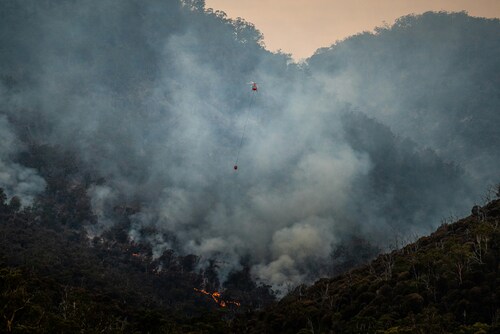In firefighting, specialized foams are instrumental in swiftly suppressing flames, particularly those fueled by flammable liquids and hydrocarbons. The deployment of firefighting foams, especially those containing per- and polyfluoroalkyl substances (PFAS), is widespread in fire suppression efforts. However, despite their efficacy, concerns arise as mounting evidence points to potential health ramifications linked to exposure to firefighting foam constituents.
The persistent nature of PFAS raises significant concerns about their effects on human health and the environment. This prompts a comprehensive examination of PFAS implications within the firefighting community. In this article, we explore the scientific evidence connecting firefighting foam exposure to various health problems.
Understanding Firefighting Foam
In 2022, the National Fire Protection Association (NFPA) reported 382,500 residential structure fires, causing 2,760 civilian deaths. Also, 10,320 civilian injuries and $10.9 billion in direct property damage were recorded. Despite the skills and bravery of firefighters, the damages could have escalated exponentially without the aid of firefighting foam.
Firefighting foam, commonly known as Aqueous Film Forming Foam (AFFF), is pivotal in fire suppression, swiftly extinguishing flames with flammable liquids and hydrocarbons. It comprises surfactants, water, stabilizers, suffocating fires, suppressing vapor, and cooling surfaces. Its delicate balance ensures effective firefighting, preventing reignition and minimizing collateral damage.
Fire-extinguishing foam’s efficacy lies in forming a barrier over the fuel, disrupting combustion. The primary types are Aqueous Film-Forming Foam (AFFF) and Film-Forming Fluoroprotein Foam (FFFP). They are tailored to specific fire scenarios and environments.
Comprehending fire-suppressing foam and its implications is crucial for adapting to fire safety and environmental concerns effectively.
Health Risks
AFFF, especially PFAS-containing formulations, poses health risks like carcinogenicity, endocrine disruption, and adverse developmental effects. Firefighters and communities near firefighting sites face heightened vulnerability to these risks, emphasizing the urgency of comprehensive risk assessment and mitigation strategies.
Addressing these health concerns requires a multifaceted approach encompassing research, regulatory measures, and proactive health monitoring within firefighting organizations.
Cancer Risk
The increased risk of developing cancer is among the most concerning health risks associated with fire-extinguishing foam exposure. The constituents in the PFAS, like PFOS and PFOA, have been classified as carcinogens. The International Agency for Research on Cancer (IARC) classifies PFOA as carcinogenic (Group 1) and PFOS as possibly carcinogenic (Group 2B).
Studies link PFAS exposure to cancer near PFOA-related plants, notably testicular and kidney cancers. Research suggests potential thyroid cancer links, though risks are minimal. Data indicates correlations between PFAS exposure and various cancers. American Cancer Society provides insights into PFAS-cancer connections.
These findings have fueled a wave of legal action against firefighting foam manufacturers. Numerous victims attribute their health conditions to the chemical exposure and hold parties accountable through lawsuits. The firefighter foam lawsuit, currently consolidated into a multi-district litigation (MDL), involves thousands of firemen and their families. The ongoing legal battle seeks compensation for medical expenses, lost wages, and pain and suffering experienced by the sufferers.
Respiratory Issues
While cancer often steals the spotlight, fire-extinguishing foam exposure can also wreak havoc on the respiratory system. Inhaling foam particles or vapors directly irritates the lungs, causing immediate symptoms like coughing, wheezing, and shortness of breath. But the damage can go deeper.
Inhalation of foam particles and combustion byproducts can cause acute and chronic respiratory ailments like asthma and bronchitis. These include interstitial lung disease (ILD) and chronic obstructive pulmonary disease (COPD). Also, a study by the National Institute of Health reveals that firefighters have a higher respiratory risk than the general population.
Skin Irritation and Dermatological Problems
The risks don’t stop at the lungs. Firefighting foam can also cause significant damage to the skin, the largest barrier our body has against harmful substances. Direct contact with foam can trigger immediate irritation, redness, and burning sensations. Some fire personnel even report painful rashes, blisters, and eczema-like symptoms upon prolonged exposure.
The culprit again lies with PFAS chemicals, known for their skin-irritating properties. Chronic exposure to PFAS can result in increased allergies and sensitivities, affecting firefighters’ comfort and health. Moreover, PFAS may accelerate premature skin aging by disrupting collagen production and the skin’s natural barrier function. Also, they may have an elevated risk of developing melanoma, the most dangerous form of skin cancer, according to the Skin Cancer Foundation.
Implementing skin protection strategies, such as barrier creams, decontamination procedures, and medical evaluations, mitigates fire-extinguishing foam’s adverse effects.
Potential Reproductive and Developmental Effects
Exposure to fire-extinguishing foam constituents raises concerns about potential reproductive and developmental effects among firefighters and affected communities. Studies link PFAS to adverse reproductive outcomes and developmental abnormalities. These findings emphasize the urgent need for protective measures and further research.
Proactive measures, including risk assessments, are essential to minimize exposure risks. Stringent decontamination protocols are crucial. Prioritizing reproductive health initiatives safeguards firefighters and future generations from adverse consequences of fire-extinguishing foam exposures.
A National Institute of Health study on male fire personnel found associations with infertility, reduced semen quality, and reproductive cancers. Research highlights female firefighters experiencing pregnancy and birth complications, including miscarriage and preterm delivery. Studies emphasize the reproductive health challenges faced by both male and female fire responders.
Neurological Impacts and Cognitive Health Concerns
Exposure to fire-extinguishing foam constituents poses significant neurological impacts and cognitive health concerns among firefighters and individuals residing near firefighting sites. PFAS, prevalent in firefighting foam formulations, has been associated with neurotoxic effects and cognitive impairments.
Researchers anticipate potential associations between PFAS exposure and learning/memory issues, neurodevelopmental disorders in exposed firefighters’ children, such as ADHD and autism, and headaches/dizziness. These findings underscore the neurological risks posed by fire-extinguishing foam exposures.
Environmental Contamination
The utilization of fire-extinguishing foam leads to extensive environmental contamination, endangering ecosystems and human well-being. PFAS persistence has resulted in soil, groundwater, and surface water pollution near firefighting locations.
AFFF, the more prevalent variant, contains PFAS, which is known for durability. PFAS pose potential health risks and persist in the environment. Their presence concerns firefighters and communities. CNN reported in 2022 that PFAS chemicals were found in 98% of Americans’ blood. This information was based on a report utilizing NHANES data. This alarming prevalence underscores the pervasive nature of PFAS exposure across the US population.
Also, firefighting foam residues harm wildlife and aquatic organisms, causing reproductive abnormalities and ecological imbalances.
Risk Mitigation Strategies and Protective Measures
To address health concerns from fire-extinguishing foam exposures, robust risk mitigation strategies and protective measures are essential. This starts with comprehensive risk assessments to identify exposure pathways and vulnerable populations. Subsequently, stringent safety protocols must be developed and implemented to safeguard against potential risks.
Collaboration among firefighting agencies, regulatory bodies, and medical professionals is crucial for cultivating a culture of safety and accountability. TorHoerman Law reported that Connecticut’s Attorney General filed lawsuits against 28 chemical manufacturers for PFAS contamination. The objective of these lawsuits is to ensure that companies are held responsible for the damages incurred. Such efforts ensure the well-being of the firefighting community.
Navigating the Path Forward
Concluding the blog on firefighting foam exposures reveals multifaceted and far-reaching challenges. Through this blog, we found that urgent attention and concerted action are needed. The potential risks, from carcinogenicity to environmental contamination, demand immediate consideration.
The discourse surrounding firefighting foam exposures underscores the imperative of informed decision-making, proactive risk mitigation, and steadfast advocacy. It calls for a paradigm shift in firefighting practices, emphasizing the primacy of safety, health, and environmental stewardship in every operational endeavor.



